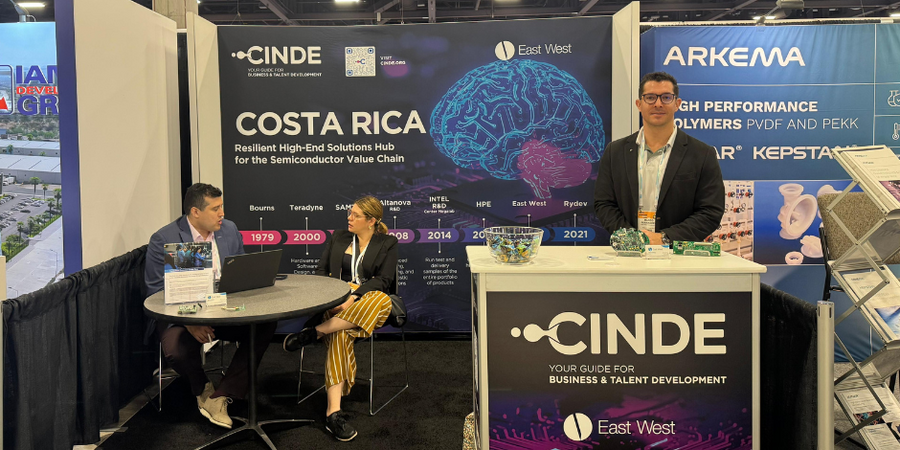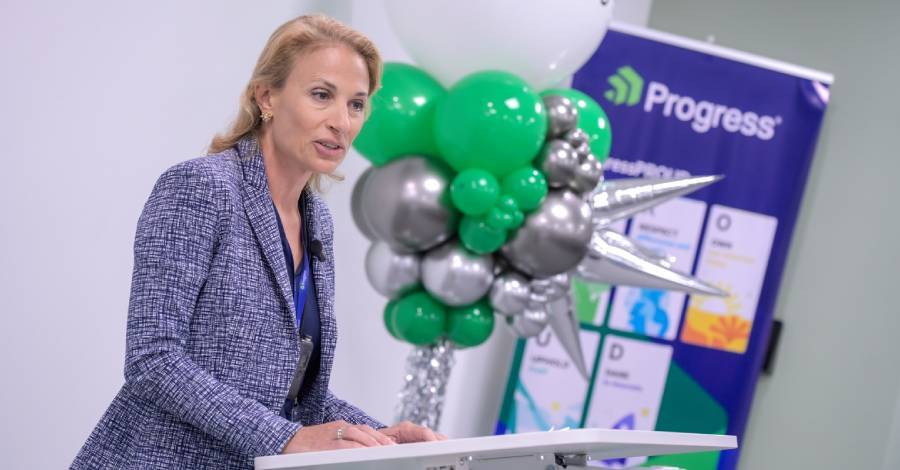San José, Costa Rica. May 24, 2022. Minister of Science, Innovation, Technology and Telecommunications Carlos Enrique Alvarado and Vice Minister of Foreign Trade Paula Bogantes visited the Long-Term Retention (LTR) Lab, a unique lab in
Intel Corporation that was recently expanded to host up to 6,000 hardware and software platforms in order to provide support throughout the world for both the latest products and platforms launched by Intel on the market and those that came out even as far back as ten years ago.
With an area of more than 2,500 square meters, the lab has validation equipment that engineers can use remotely 24/7 from any part of the world. Services include a database of available physical and digital assets, verification, and access for testing and/or debugging. The lab has created 160 jobs for direct employees and outsourcers and is expected to add 50 more by the end of the year.
“Despite the pandemic, in recent years we have strengthened Intel’s presence in the country. The passion, commitment, and
innovation of Costa Rican talent has been a key piece of this growth, enabling us to continue adding value to the corporation. Today we contribute to the country’s economic growth with more than 3,500 direct jobs and opportunities for more than 5,000 outside contractors,” said Ileana Rojas Saborío, vice president at the Global Design Engineering Group and general manager of Intel Costa Rica.
Minister of Science, Innovation, Technology and Telecommunications Carlos Enrique Alvarado noted that “Intel has been vital for Costa Rica’s entry to the global
technology and
services industry. Thanks to its presence we can say that our country is a successful case of globalization. We therefore hope it will continue to contribute with its local operations to the economy and development of Costa Rica’s knowledge society.”
Foreign Trade Vice Minister Paula Bogantes was pleased with Intel’s announcement that it would be expanding its laboratory, the only one of its kind in the corporation, stating, “We see this announcement as a renewed sign of confidence in the country by a company that not only pioneered high-tech investment in Costa Rica but also has a long history in this nation. And we hope it stays like that for many more years. We are glad to hear the news of the laboratory expansion, which represents a major opportunity for creating new jobs and collaborating with other local companies. This must without a doubt be taken as a recognition of our most valuable resource, the talent of our people.”
Intel Costa Rica: the country’s largest engineering communityIntel Costa Rica’s operations bring together the largest community of engineers in the country, a total of more than 1,600 professionals who today are forging their careers in different fields to drive technological trends such as ubiquitous computing, omnipresent connectivity,
cloud to edge infrastructure, and
artificial intelligence.
This community continues to grow. Three new business units have recently been added to the
Research and Development Center:
1. Intel Microsoft* Technology Center: The center works directly with Microsoft on the definition, development, and maximum use of its new Intel architecture technologies to improve the end customer’s experience. This business unit works with machine learning, virtualization, telemetry, and validation applications and requires cloud software engineering and systems/platform validation professionals.
2. Processor Validation Engineering with Emphasis on Performance and Power: This unit works together with architecture organizations on implementing testing, automation, and configurations related to performance and energy use of the different components of a modern processor, delivering the best experience, quality, and value to customers. This group requires performance validation engineers.
3. Chipset Development: This unit is responsible for the design of the entire Intel chipset portfolio. A chipset is an additional microchip that is responsible for all interfacing between the computer and other devices (cameras, earphones, USB ports, etc.) as well as management of platform, battery, and sensor power. This team works on the first part of the product life cycle, doing the logical design of the chip behavior. It requires engineers in register-transfer level (RTL) digital design and functional verification, pre-silicon functional verification, optimization and analysis of integrated circuit power consumption, integrated system on chip (SoC) design; and engineering students in integrated system on chip (SoC) design and tools, flows and methodologies (TFM) design and support.
Additionally, the Product Engineering Manufacture Group, also part of the Research and Development Center, is expanding its operations in Costa Rica and requires electrical, electronic and computer engineers as well as engineering technicians.
All told, by the end of the year Intel will create more than 300 job opportunities in its Research and Development Center for both experienced and newly-graduated professionals. Interested persons in Costa Rica or the region - provided they are available to move to Costa Rica - can check the requirements only at
www.intel.com/jobs.
CINDE Managing Director Jorge Sequeira added, “Intel is a driver of the technology transfer that positions Costa Rica as a key destination for foreign direct investment (FDI). In the last year, incoming FDI reached more than $3,200 million with an average per capita productivity of $619, placing the country among those with the best performance in Latin America. We congratulate Intel on its expansion of these laboratories in the knowledge that its commitment will increase Costa Rican value-added and demonstrate the country’s potential in research, development, and innovation.”
“At Intel we have a clear customer orientation. We invest strongly in research to ensure protection, reliability, performance, and quality in the technologies, services, and products we offer our customers. We are in a unique position to capitalize on the accelerated growth of digital life, so it is essential to maintain the global competitiveness of local operations,” added Ileana Rojas Saborío, vice president at the Global Design Engineering Group and general manager of Intel Costa Rica.
High-value operationsIntel has more than 3,500 employees and generates work for some 5,000 outside contractors. Its high-value activities for the corporation are divided into three major centers of excellence:
1. Research and Development (R&D) Center: Currently the country’s largest and biggest exporter of these services, this center is dedicated to the design, prototyping, testing, and validation of integrated circuit and platform solutions. Some 48% of the workforce is employed here.
2. Global Services Center: This center designs, implements, and transforms global multifunctional business processes in finance, human resources, marketing and sales, and the supply chain. Another 25% of the workforce is employed here.
3. Processor Assembly and Testing: Some 27% of the organization is employed here in the manufacture and supply chain where some of the main servers offered on the market by Intel are assembled, tested, packaged, and shipped directly to customers.








